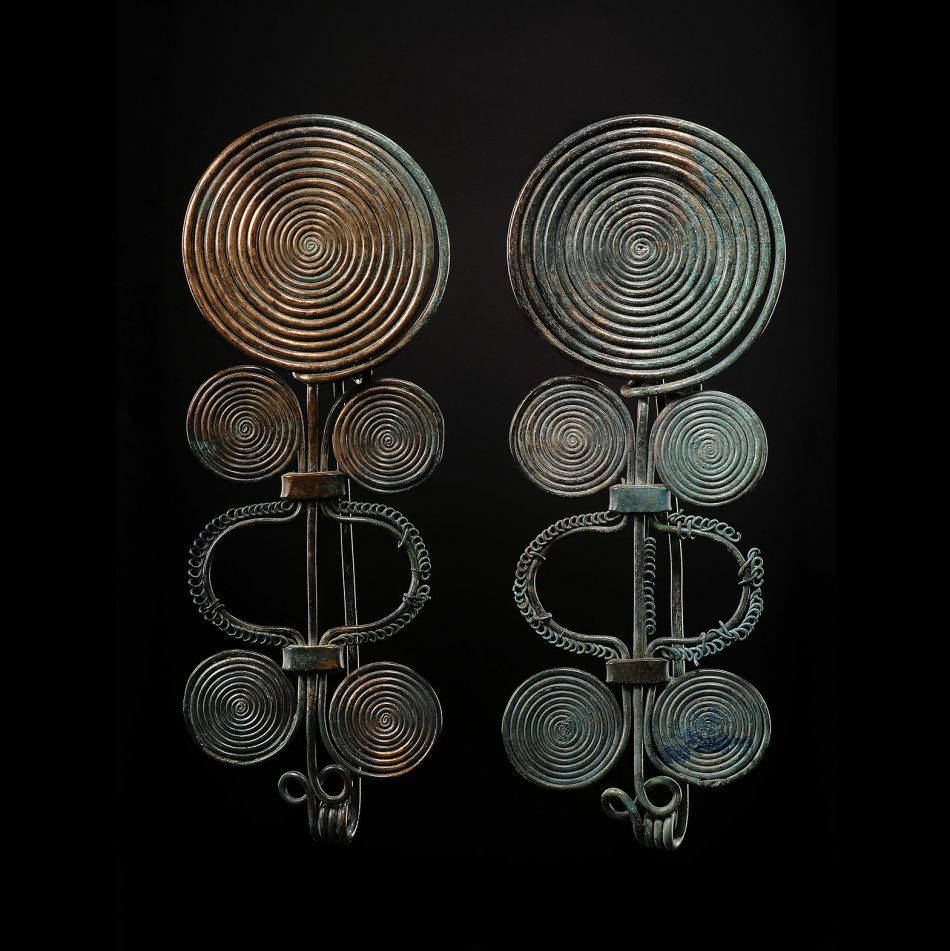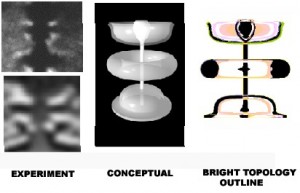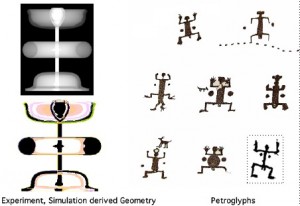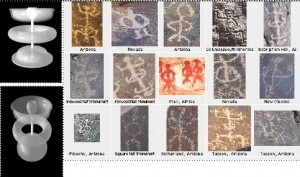A Pair of Bronze Spiral Fibulas. © phoenixancientart.com.
Culture: European, Bronze Age
Period: late 2nd – early 1st millennium B.C.
Material: Bronze
Dimensions: H: 23 and 23.1 cm.
Provenance: Acquired on the German art market, 2002.
The original extended description says:
This jewelry belongs to a group of fibulas called “spiral” fibulae, which were well known during the final phases of the Bronze Age north of the Alps and in Eastern Europe (especially in the region of the Carpathian mountains). Often, fibulae of this type are small masterpieces of precision: along with the closing mechanism (a pin and catch) all of the decoration was entirely fabricated from bronze wires of circular or angular cross-section; sometimes the surface of the wire is even ornamented with incised geometric motifs. In the case of this fibulae, the pin and the top loop were worked from a single thick, even metal wire, while two other thinner wires were used to model the lateral parts (two small intertwining spirals with a semi-circular loop), with two catch plates fixed to the top of the principal stem. A very thin wire that spirals around the middle loops constitutes supplementary decoration. The variety of typology is one of the characteristics of “spiral” fibulae: there exist very simple versions (with a single pair of spirals of dimensions similar to the central disk, type A 1) and more elaborate ones, displaying up to three or four pairs of loops (type A 2 and A 3, with two or three catch plates), as well as examples ornamented with pendants in the shape of spear points or a bird (type B). The two pieces in questions are classified as group A 2, even if the central volute, replaced in this case by the semi-circles with spiraled wire, is a non-canonical type.
The spiral is one of the iconographic motifs that dominated Balkan culture at the end of the Bronze Age, and the artisans applied it generously in the decoration of their products: they appear as principal elements on numerous jewels (diadems, rings, bracelets, fi bulae etc.), but also on other goods such as ceramics, metal vessels, etc. Its ubiquity is such that, in spite of an absence of concrete proof, one may ask if its signifi cance does not surpass that of simple decorative style but if it enters the sphere of religious or magical significance.
Most “spiral” fibulae were found in archaeological deposits, the locations of which are not always evident: at times it seems that the deposits were created to resemble cult groups (vessels, daggers, etc.), foundry deposits for the recycling of metal, hiding places, etc. Some examples come from necropoleis, but in general, the information on the manner in which these jewels were worn is not very precise; they seem, nevertheless, to have been used to pin the fabric of tunics and that men and women could wear them. Considering their size and their degree of elaboration (certain fi bulae can reach 40 cm in length), certain examples were probably signs of nobility, of means, of rank or simply of wealth.
Bibliography
BADER T., Die Fibeln in Rumänien, München, 1983, pp. 41-56, pl. 5-10.
NOVOTNA M., Die Fibeln in der Slowakei (PBF XIV, 12), Stuttgart, 2001, pp. 37-39, pl. 5-12.
The Metropolitan Museum of Art Bulletin, Fall 2001, Recent Acquisitions, A Selection, p. 8.
VASIC R., Die Fibeln im Zentralbalkan (Vojvodina, Serbien, Kosovo und Makedonien), Stuttgart, 1999, pp. 22-27, pl. 4-7.
I would compare it to this:











